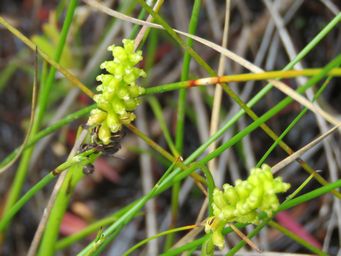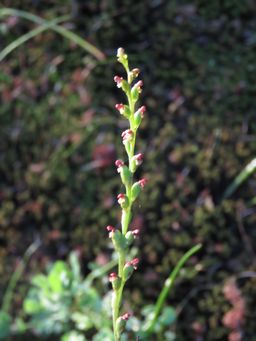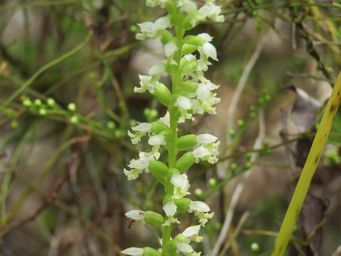
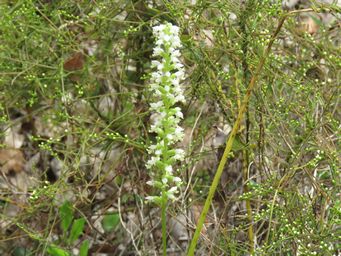
Australia So Much to See
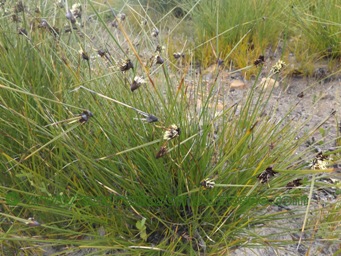
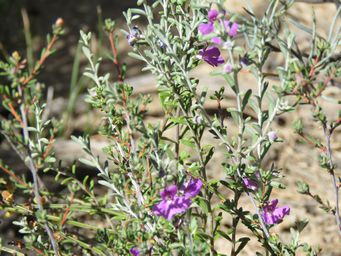

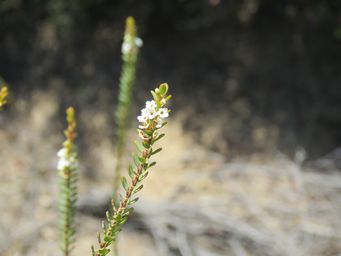

Microcorys species
Several similar species grow in the Kent and Lake Grace shires; Microcorys glabra, Microcorys sp stellate, Microcorys
subcanescens, and Microcorys virgata which has very small leaves.
These plants from different locations share similar purple flowers. Small tubular flowers with five petals with a white centre; two semi-fused petals point up, two point down, and a larger petal
at the bottom. Upright branching stems with narrow short leaves with a rounded tip along the stems.
November
Above
left near Pingrup, Great Southern region, and above right at Kulin, Wheatbelt region. These two are very similar and may be the same
species.
Microcorys species (at right)
A dense rounded shrub with small tubular purple flowers with five petals; two semi-fused petals point up, two point down, and a larger petal at the bottom, with a white centre. As well as different growth pattern to those above, leaves are longer with sides curved upwards, and a lighter coloured edge. This was also seen at Kulin.
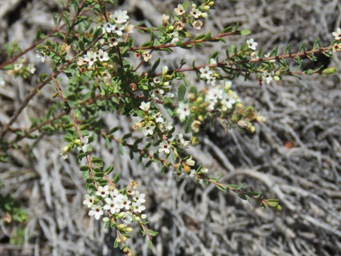
Micromyrtus species, with Micromyrtus erichsenii, Micromyrtus triptycha and Micromyrtus triptycha subsp. triptycha all similar.
A small
upright or sprawling shrub with tiny white tubular star flowers which have a red tan centre. Short slightly succulent leaves
which are as wide as long, with a slight point at tip alternate along the stems.
Dragon Rocks Nature Reserve, Newdegate, Wheatbelt
region, Western Australia
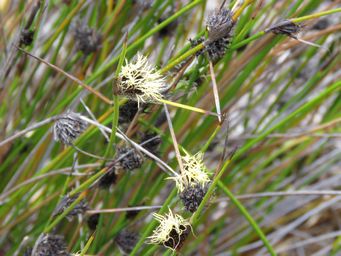
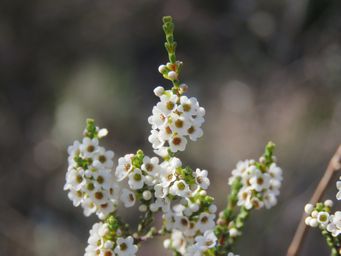
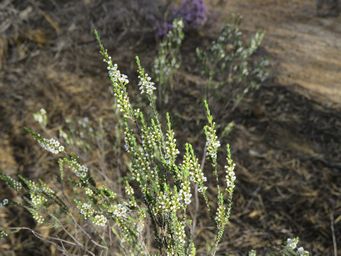
Micromyrtus racemosa, Dense Heath-myrtle
A shrub with spikes covered with tiny white, cream, yellow or pink five petalled flowers.
Leaves amongst the flowers point upwards close to the stems, are narrow to a pointed tip.
August
Moorine Rock, Shire of Yilgarn
in the eastern Wheatbelt region, Western Australia. Found in southern areas of the Mid West and through the Wheatbelt region.
Microtis cupularis 2007, Cupped Mignonette
Perennial orchids, with green flowers up the single stems. Petals and sepals are inward
facing, with the labellum being curved, giving rise the name cupped. The rear side of the petals has maroon tinges, with the
dorsal (top) sepal forming a hood over the column of the flower, and the outer side is maroon.
November
Yornup, Bridgetown-Greenbushes
shire, South West eegion, Western Australia, following a prescribed burn as it is one of many fire respondent orchids. Found
in the Perth Peel region, around Bunbury, Northcliffe and Walpole in the South West, the western edge of the Great Southern, in the
coastal fringe east of Esperance in the Goldfields, and it has been recorded from a location near Three Springs in the Mid West region. Favours swamps and winter wet low lying areas, and can grow in water.
Microtis atrata, Swamp Mignonette Orchid, Yellow Onion-orchid, Dwarf Mignonette Orchid. Known as Microtidium atratum in some
states.
A tiny Mignonette orchid, with yellow-green flowers up the stem. Leaf is almost solid, yellowish green; sheath
opening close to bottom of inflorescence. Microtis atrata has the smallest flowers of any Australian terrestrial orchid.
December
Northcliffe,
Manjimup shire, South West Region, Western Australia. Found in swamps and low lying depressions though the Perth Peel regions,
parts of the South West, the lower Great Southern, and along the coastal strip around Esperance in the Goldfields. Also found
in other states.
